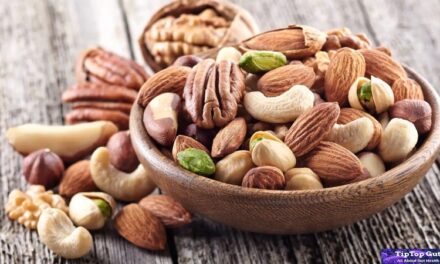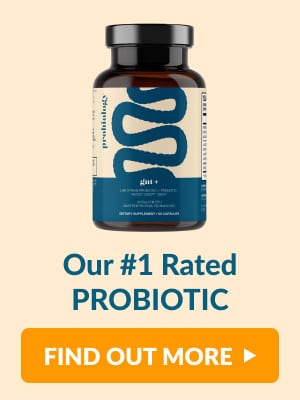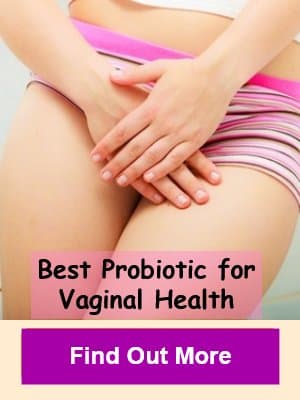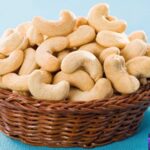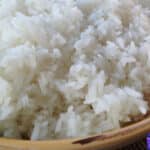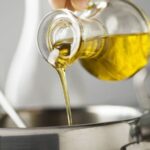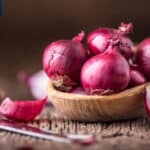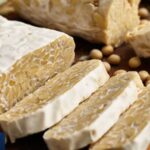Fermented foods are full of beneficial bacteria, the same types of bacteria that exist and thrive in our gut. Kimchi sauerkraut, miso, sauerkraut tempeh, tempeh and even the common pickle are filled with these beneficial gut microbes. Here, we are going to discuss the health benefits of pickles and the best pickles for gut health.
Are Pickles Healthy in Your Diet?
Pickles are low in calories and are a source of beneficial bacteria.
Pickles are fat-free and low in calories; however, they also have a low content of all other nutrients except sodium.
Studies confirm that a 100-gram serving of butter and bread pickles is a source of 457 milligrams sodium, or about 20 percent of the daily limit. Most pickles contain sodium, and it’s essential to reduce consumption.
People who suffer from hypertension or heart health problems should avoid eating pickles.
The primary benefit of pickles is the fact that sure pickles have beneficial bacteria. Brines are used to create pickles. Brine is water mixed with salt or an acid like vinegar.
Fermented brine is a good source of bacteria that improve a person’s health, but only certain brines are subject to fermentation.
Fermented pickles function as probiotics, protecting your microbiome in the body and encouraging the growth of beneficial bacteria that live in your gut.
Fermented pickles are rich in probiotics, improving digestion and avoiding minor stomach problems.
A few studies indicate that the use of probiotics might have other health benefits, which include:
- reducing symptoms of depression and anxiety
- treatment of cavities as well as gingivitis
- managing diabetes
- The prevention or treatment of allergies
- The reduction of the risk of urinary tract infections
- lowering the risk of some cancers, including colon cancer
The research into the benefits of probiotics is still in the beginning stages. Researchers must conduct further extensive studies before they can have any certainty regarding the long-term health benefits of probiotics.
Read More:
Are Pickles Good For Gut Health? Amazing Facts about Pickles & Gut Health 2022
Pickles as Probiotic Foods
Probiotics from pickles are the most effective diet for your digestive system.
Probiotics are beneficial bacteria that are added to your diet or used as a supplement to improve the quantity of gut-friendly bacteria that reside within the colon. Fermented vegetables that are high in beneficial bacteria can be helpful to probiotics. Eating them can increase the numbers of good gut bacteria to surpass the likely “bad” and harmful ones.
In reality, it is true that a fermented pickle well is expected to contain more beneficial bacteria than any probiotic supplement! By increasing the amount and effectiveness of the beneficial bacteria in your gut, probiotics positively impact your health, from helping boost your immune system and the health of your skin to assisting in improving your mood and cognition.
Pickles that have been fermented are regarded as probiotic food because they contain healthy bacterial strains that, when regularly consumed, can increase the diversity and population of our gut microbiome.
Fermentation is an essential part of food preparation humans have used for centuries. By creating an environment that favors the beneficial bacteria found naturally in food items, we can help these microbes break down the sugars and starches in the food.
This provides food for the beneficial bacteria (which can then grow), partially digests food, alters your food’s pH, eliminates any potentially harmful bacteria, and keeps the food from rotting. Magic! Fermented pickles are made by beneficial bacteria that act in the skin of the cucumbers. There is a second method of making pickles that don’t cause the growth of bacteria – picking.
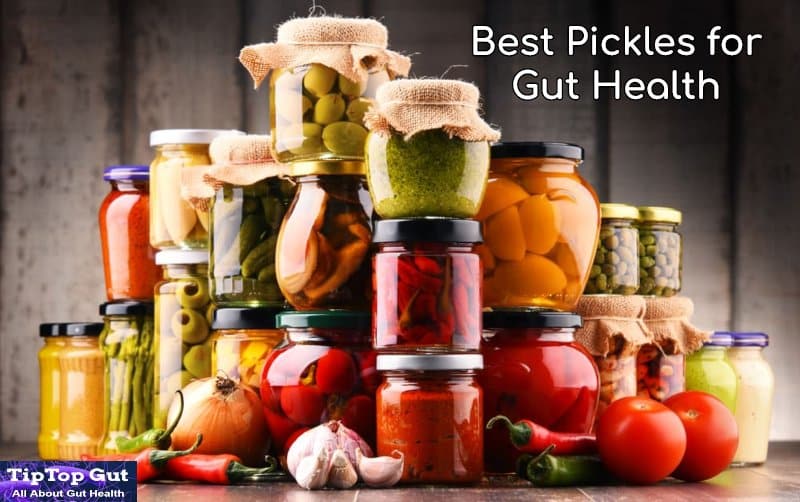
Pickles or Fermented Pickles: Which One has the Most Benefits?
Fermented pickles offer clear benefits. Placing cucumbers in brine makes the perfect conditions for beneficial bacteria to flourish. They transform into probiotics. Good microbes get transferred to your digestive tract after eating fermented pickles.
Pickles are typically made using vinegar rather than brine. When bacteria digest cucumbers during the fermentation process, vinegar can break down the sugars and starches present in Pickling. Pickling has the same “zing”-y flavor as fermentation; however, it doesn’t provide an environment where good microbes (or bacteria) can flourish.
The vinegar kills all the bacteria in cucumbers and provides no benefits to your health. But, some raw vinegar that is not pasteurized (like apple cider vinegar) have their varieties of gut bacteria that are beneficial – but you’ll rarely get pickles made from these kinds of vinegar at the supermarkets.
Just be aware that you won’t be receiving the fermented pickles gut health benefits. Each jar is carefully prepared to ensure natural fermentation and is filled with hand-selected fresh ingredients from nearby farms along the west coast. If the quality and health advantages weren’t enough, this kraut’s wonderful flavors made it well worth trying.
Do Pickles Aid in Your Digestion?
Fermented pickles help digestion in several ways:
- Pickles are not just beneficial for gut bacteria. However, the process of fermentation increases the number of nutrients available by partially digesting the pickle, which allows you to consume more nutrients with less effort, which helps the gut relax. Pickles are also rich in specific types of fiber that feed beneficial gut bacteria and act as prebiotics – food for good bacteria in the gut.
- Research has shown that adding fermented veggies to your diet could aid digestion and manage symptoms of diarrhea or constipation. It is believed that drinking “pickle juice” (the brine used to ferment pickles) could help reduce symptoms of reflux and heartburn; however, there aren’t any studies to prove this.
- Pickles that have been fermented are probiotic superfoods filled with good bacteria that aid in maintaining your microbiome in the gastrointestinal tract and are beneficial for the gut microbiome. Always opt for fermented, not vinegar-pickled.
Read More:
List of Fermented Foods for Gut Health: Top 11 Best Fermented Foods
Best Pickles for Hut Health
Following are the best brands for Fermented Pickles containing Probiotics
Olive My Pickle
Olive My Pickle sells pickles in the form of a fermented Pickle Bundle that contains Garlic, Kosher Dill, and Spicy Dill.
It’s labeled with the label “Lab Certified Probiotic.” Olive My Pickle offers its products in a bag that makes them easy to keep in the fridge and pantry as they’re not heavy.
Bubbies Pickles
Bubbies produces naturally fermented Kosher Dill Pickles and Kosher Dill Relish. The label says on the jar. No vinegar, no sugar All-natural.
Cucumbers and water, salt, garlic, dill mustard seeds, spices, and calcium chloride are ingredients.
This particular brand of pickles is delicious and is a fantastic source of probiotics, naturally fermented bacteria that help to promote good gut bacteria in our bodies.
The fact is, Bubbies Bread & Butter Chips aren’t fermented. Their Butter Chips and Bread are shelf-stable and pasteurized, but they taste equally good. Bubbies also produce sauerkraut.
Kreugermann Pickle
Kreugermann is proud of its products made of pickles that are derived from family recipes that are based on traditional traditions.
To ferment, Kreugermann uses locally sourced ingredients like dill and cucumbers and a mild salt solution that isn’t contaminated by chemical substances. Each jar is carefully prepared to ensure natural fermentation and is filled with hand-selected fresh ingredients from nearby farms along the west coast. If the quality and health advantages weren’t enough, this kraut’s wonderful flavors made it well worth trying.
This results in the natural generation of probiotics. Kreugermann declares in their product label,” In Cloudy Brine, Naturally Fermented Dills.”
Kreugermann is naturally sour and does not require vinegar, which is excellent for those who love pickles but suffer from hyperacidity.
Oregon Brineworks
Oregon Brineworks is a brand that has become so well-known that its products are selling out of the shelves. Beyond Garlic Dills and Spicy Dills, they make sauerkraut, Beet Kvass, Pickled Beets, and ginger Roots using golden beets, carrots, and ginger.
The distinctive feature characteristic of Oregon Brineworks is that it does not pasteurize its pickles and only sources ingredients directly from farms with organic certification. The pickles are so delicious that they’re often sold out.
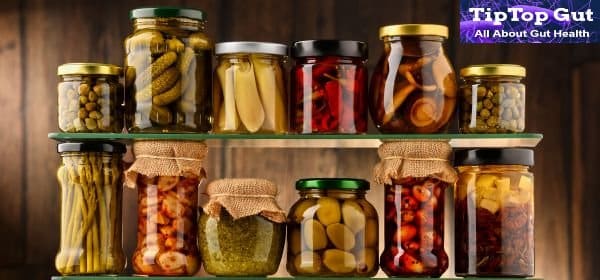
Which Pickles Are Best for Gut Health?
Beyond flavor, there are only two main kinds of pickles
- Short Pickles — Pickles made with vinegar
- Fermented Pickles: Pickles are made using brine and are then fermented thanks to the bacteria that naturally occur in the vegetable and on it.
Although both are equally delicious, the main difference between the two types of pickles is their probiotic qualities. Pickles made with vinegar don’t have the same beneficial bacteria as pickles that have been fermented.
Fermented pickles are probiotic aliment, meaning they have good strains or strains that, when consumed regularly, could help increase the number of people and diversity of the microbiome in our gut. There haven’t been any studies to support the rumor that drinking “pickle juice” (the brine used to ferment the pickles) will aid in treating heartburn and reflux symptoms.
It’s recommended to include fermented food items such as fermented pickles in your diet if the specific metabolites associated with the microbiome of the gut aren’t in the ideal range. The compounds indole-3-propionic acids, indole-3 lactic acid, and indole-3-acetic acids are all renowned for supporting the diversity and population of the microbiome in the gut.
However, it is essential to revisit your buying habits for pickles to ensure you’re putting in an assortment of fruits and vegetables that can help in supporting your gut.
Choosing the Best Pickles for Gut Health
When choosing pickles, take note of these suggestions:
Purchase locally. The market at the farmers’ market is the best spot to search for authentic pickles. Not only are you able to discuss their pickle production methods and methods with the seller, but you also find out more about the flavor and varieties available.
Fermented pickles will typically be located in the refrigerated area within the produce aisle. Cool temperatures slow further fermentation, while the intense canning temperatures may damage the good delicate strains of bacteria found inside fermented pickles.
Make sure you spend extra dollars. Pickles are cheap, and while it’s easy to search the shelves to find the most affordable pickle, look for a more quality pickle. A higher-priced option may state that the item is a fermented food item.
Check the tag. If you spot vinegar, it will tip you away that this quick pickle may be disguised as a fermented cousin.
Create yourself! It might sound like something that takes a lot of effort; however, with just a handful of cukes, some fresh kosher herb salt, water, and a glass container, create your pickles fermented from scratch! You’ll be amazed at its simplicity if you do it for the first time. It could even help you save a few bucks compared to the organic farmers’ market pickles you’ve been purchasing.
Read More:
Biotics 8 Review: SCAM or A Legit Probiotic for Men?
Slightly Sour Pickle, Lacto-Fermented, Fermented foods
Note from Sam for beginners; I would suggest experimenting with an initial small amount so you don’t become overwhelmed by the entire process. Try between 8 and 10 cucumbers, which can be fit into a 1-quart Jar.
Ingredients:
- Pickling Cucumbers ranging from 8-10 per Jar (See the notes below on choosing the most suitable Pickling Cucumbers.)
- Two teaspoons of peppercorns
- Two dill flower heads or two tablespoons of dill seeds
- Three cloves of whole garlic are crushed and peeled.
Optional Ingredients:
- One leaf of a bay
- One teaspoon of mustard seeds
- Dry or crushed hot peppers, according to your taste.
Equipment:
- Three glass wide-mouth canning jars with rings and lids (if they aren’t made of plastic)
Brine Ingredients:
- Two tablespoons of salt from kosher.
- 4 Cups of water
Note: You must make sure you use chlorinated water that is not chlorinated or filters your water. If you’re making large batches, you can increase the quantities.
Picking the Perfect Pickling Cucumbers
You can make your fermented pickles home with just a few cucumbers, fresh herbs, kosher salt, water, and a glass jar. Once you give it a shot, you’ll see how simple it is.
- Be sure to ensure that you are using only fresh cucumbers and
- Keep them cool if you aren’t picking them right away.
- Don’t forget to cut the flower’s end when you are making the flowers.
- Select a cucumber of the size you enjoy. To get the best results, choose cucumbers that have been bred to be suitable for picking.
Directions:
- Clean the cucumbers thoroughly with cold water. Take out any bruised, discolored, or soft ones. Be sure to select cucumbers that have not been waxed. After cleaning cucumbers, soak them in an Ice bath. (This is not required; however, I’ve found that I obtain the most effective results. I typically do this for about 2 to 3 hours before I make a pickle.)
- To prepare the brine, bring the liquid to a simmer and then add the salt kosher. It’s essential to use water that’s not chlorinated or filtered since chlorine or minerals shouldn’t hinder fermentation.
- Mix in the salt till it dissolves. Put the brine in a bowl for cooling while you prepare the cucumbers and the Jars.
- Cut off the blossom end of the cucumbers or cut them off at both ends if you cannot determine the right cut. You may also cut the cucumbers if you want to. I prefer them as a whole or cut in half, depending on the size.
- Place a grape leaf or two leaves to the bottom of the jar, and after that, add in the spice.
- Place the cucumbers in the jars in a friendly manner leaving enough headspace to allow the brine to cover the cucumbers completely. I suggest a minimum of 1/4 inch. Ideally, you’ll want to fill the jar with enough force so that they don’t sink upwards when you add the brine. I add a grape leaf on the top to aid in this. You could also add cucumbers on top and wedge them in to keep them from getting too hot. If I do this, I usually use it as my very first “sacrificial pickle” to taste. If you are interested in making pickles, there are some tools you can purchase; for instance, glass weights can be used to make this happen. It is unnecessary to buy these items if you are taking some time and will only do it occasionally.
- Once the brine has reached room temperature, you are ready to add it to the cucumbers. Secure a lid of plastic open onto the jar, then place them on the countertop to ferment. I make my ferment in a particular part of my basement. In the beginning, you’ll want to do it in a place where you can view the jar and remember the container. It’s easy to overlook when you’re extremely busy and do not pickle frequently. Ideally, the temperature must be at or below 77degF. The warmer it gets, the quicker the fermentation process will occur. If it’s freezing outside, the process isn’t as successful.
- Every day you have to eliminate the gas and “burp” in the pickling container. Unlock the lid and let the gas out and then put it back. Be careful. Don’t squeeze it up too much. It is not a good idea to create pressure. Some lids have tiny attachments to allow the gas to escape. These lids are handy and can be very efficient when making a lot of fermentation; however, you should avoid spending the money until you’re sure that this is something you would like to make plenty of.
- After three or four days, in the case of a house that is 75 degrees and 7-10 days if it is more relaxed, test the pickles for taste. Continue fermenting in the refrigerator until they reach the level of sourness that you prefer, after which you can place them in the fridge to speed up the process. Consume them within a month. The pickles ‘ color will change when they begin to ferment.
Read More:
Best Over the Counter Probiotic for Gut Health: Easy Guide 2022
Best Probiotic for Gut Health and Weight Loss: An Ultimate Guide 2022
Best Probiotic for Vaginal and Gut Health: The Best Guide 2022
Sources and References
At TipTop Gut, we rely on peer-reviewed studies, academic research institutions, and medical associations. We avoid using tertiary references.
- Cevallos-Casals, B. A., & Cisneros-Zevallos, L. (2010). Impact of germination on phenolic content and antioxidant activity of 13 edible seed species [Abstract].
-
Miller KC, Mack GW, Knight KL, Hopkins JT, Draper DO, Fields PJ, Hunter I. Reflex inhibition of electrically induced muscle cramps in hypohydrated humans. Med Sci Sports Exerc. 2010 May;42(5):953-61. doi: 10.1249/MSS.0b013e3181c0647e. PMID: 19997012.
- HealthLine
- Carol S. Johnston, Samantha Quagliano, Serena White,
Vinegar ingestion at mealtime reduced fasting blood glucose concentrations in healthy adults at risk for type 2 diabetes,
Journal of Functional Foods,
ISSN 1756-4646,
https://doi.org/10.1016/j.jff.2013.08.003.
(https://www.sciencedirect.com/science/article/pii/S1756464613001874)

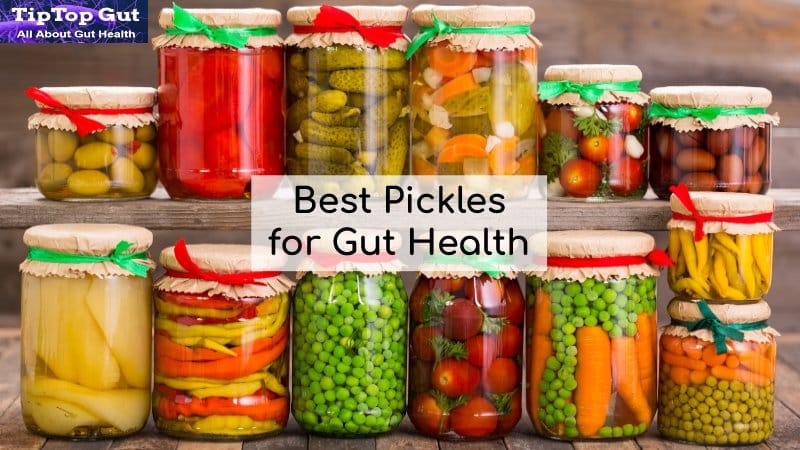
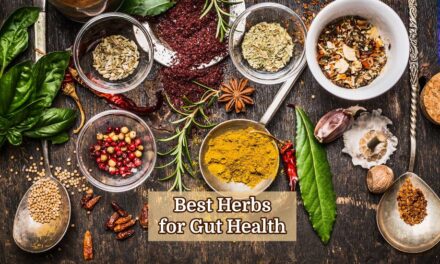
![Is Matcha Good for Gut Health? Interesting Facts Unveiled [2022]](https://tiptopgut.com/wp-content/uploads/2022/10/is-matcha-good-for-gut-health-Matcha-and-Gut-Health-TipTopGut.com_-440x264.jpg)

